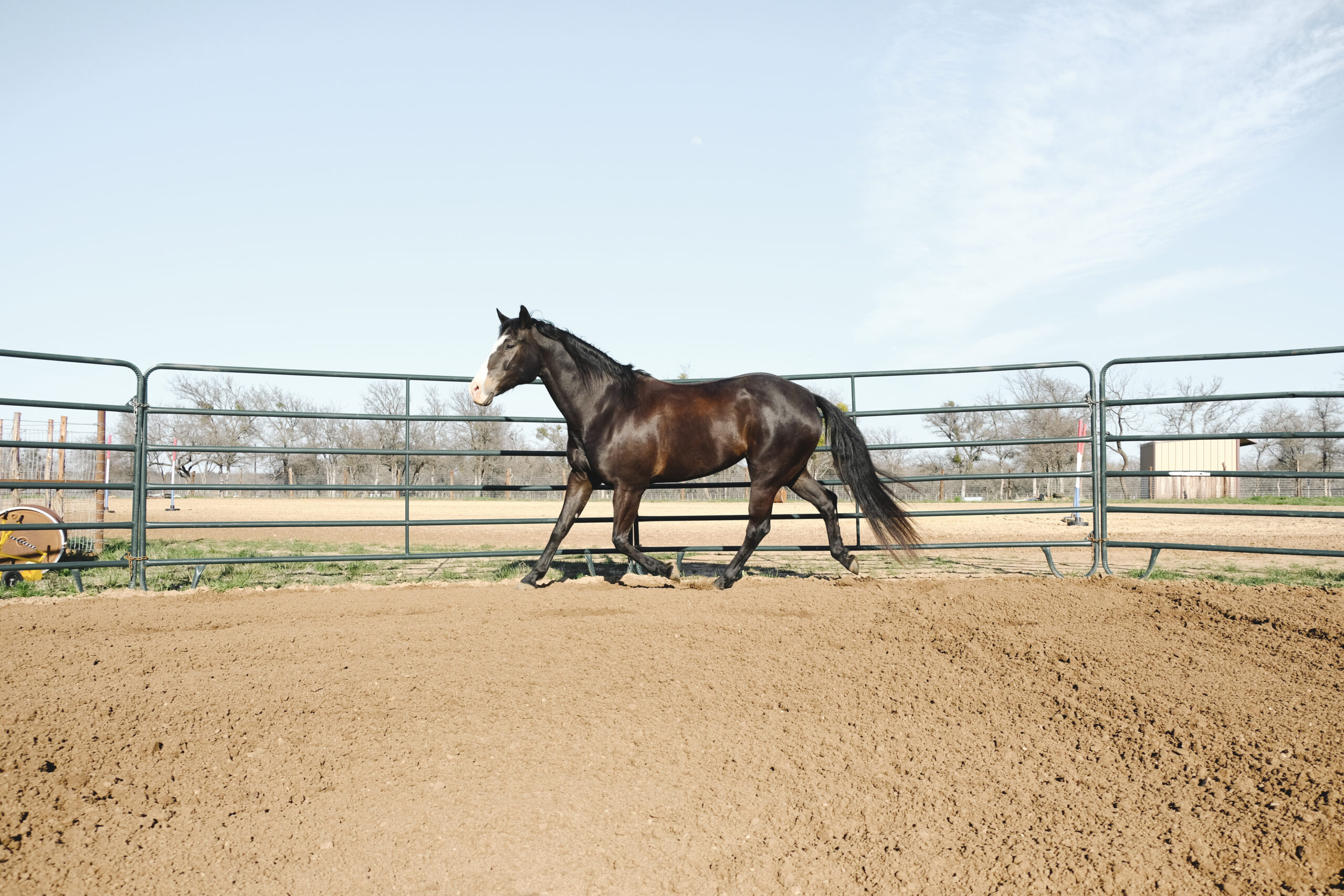Make Your Barn Comfortable for the Arthritic Horse

This article is part of our Navigating Equine Arthritis Awareness Campaign, brought to you by American Regent Animal Health.
If your beloved horse has been diagnosed with arthritis, his symptoms may range from mild to severe. You may have noticed that he was just having a little trouble getting around at first, or maybe he’s been battling it for years. Either way, once you have your answer and have started a treatment plan with your vet, you can make some small tweaks to your barn environment to make your arthritic horse more comfortable.
Safe Flooring and Soft Bedding
Consider how you can provide your arthritic horse with comfortable and secure footing. Rubber mats or soft bedding materials can help cushion joints, reduce pressure points, and prevent slips or falls, enhancing the overall comfort level for horses with arthritis. Whether your horse is in a stall with turnout time, or can come and go as he pleases, giving him the option of laying down in soft bedding can help cushion his joints. Comfortable flooring encourages an arthritic horse to lie down and rest without experiencing unnecessary strain on his joints. Providing a soft and supportive surface for resting helps arthritic horses relax and recuperate, promoting better quality sleep and overall comfort.
Your arthritic horse may struggle with mobility issues and coordination, making him more susceptible to slips and falls. Create a stable surface for arthritic horses to walk on, reducing the likelihood of accidents and injuries that could further compromise his joint health. Remove soiled bedding every day, to avoid slick surfaces, and try to keep him on flat surfaces.
[How to Tell If Your Horse Has Arthritis]Ease of Access to Feed and Water
If your horse is struggling with arthritis, consider where you’re putting his feed and water. If he has to navigate a steep hill to get to water, he might be less inclined to make the trek, leading to the litany of issues that dehydration brings. Although you want your arthritic horse to be encouraged to move around and stay active, consider if he’ll be able to access feed and water easily.
Another kindness you can do for your arthritic horse, is to place feed and water at the correct heights. Placing feeding and watering stations at the right height ensures that your horse can reach his food and water without having to stretch or bend excessively, and can help protect his arthritic joints. Easy access to essential resources promotes regular eating and drinking habits, supporting overall health and nutrition. Take into account your horse’s place in the pecking order. Will he have to fight for feed? Is it better to separate him at feeding time so that he doesn’t have to compete? These are all considerations that can make your arthritic horse more comfortable.
Daily Turnout and Exercise
Although you might think your arthritic horse should minimize movement to preserve health, and there are times this is true, movement is often good for a stiff horse. Gentle movement can help alleviate stiffness and keep your arthritic horse feeling good.
Provide daily turnout or activity for your horse so that he can get his movement and stay active. Consider your turnout environment, however. If he’s in a big herd and is at the bottom of the pecking order, he might get pushed around. This can lead to further injury or stiffness. Consider turning him out with gentle horses, or a smaller herd. If he’s unable to be ridden anymore, try ponying him behind another horse, handwalking, or just ensuring he has an area to freely move around to his comfort level.

Mental Stimulation
If your horse has arthritis and isn’t getting the call anymore to compete, don’t neglect his need for mental stimulation. Providing turnout will help with this, but take time to continue to handle him and groom him. A solid grooming session not only helps your arthritic horse stay in a routine, but can help circulate blood and reduce discomfort.
Introduce novel objects like large balls or hanging toys in the stall or corral for your horse to investigate and interact with. Give him time with other horses to maintain social interactions. If he’s able to, incorporate groundwork training or light riding to keep him active.
Consider Your Setup
As your horse ages or battles arthritis, you might need to make some changes to your setup. If your barn is on a hill, he might have handled that just fine before the arthritis set in. Now, you might need to reconsider his environment. If possible, providing your arthritic horse a flat place for turnout, feeding, and stalling can help protect joint health.
Looking at herd dynamics and ensuring that he won’t be pushed around by other horses can keep a stress-free environment. Providing feed and water in easy-to-access spaces can keep him eating and drinking consistently. Creating a comfortable space for him to lie down on soft bedding when he wants can cushion joints and help him get much needed rest. Work with your vet on a treatment plan, and consider adding in joint health supplements to maintain comfort. These are small considerations to make to keep your arthritic horse comfortable in your barn.



